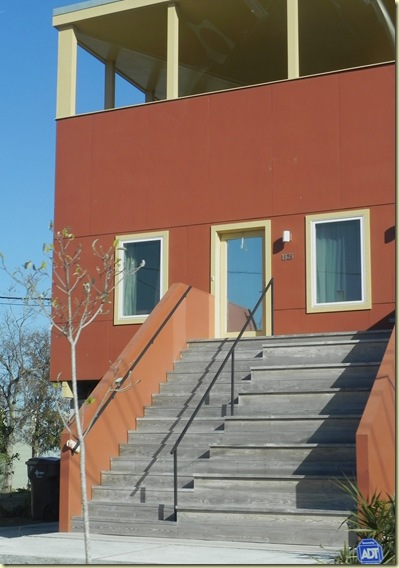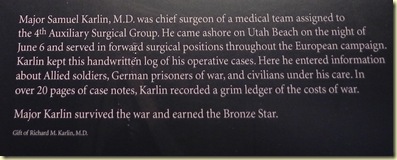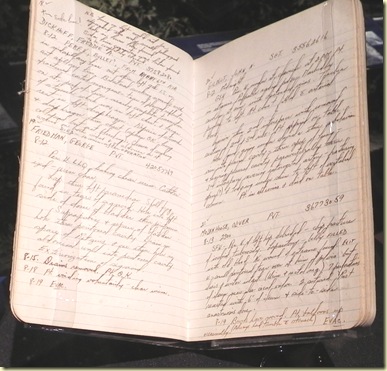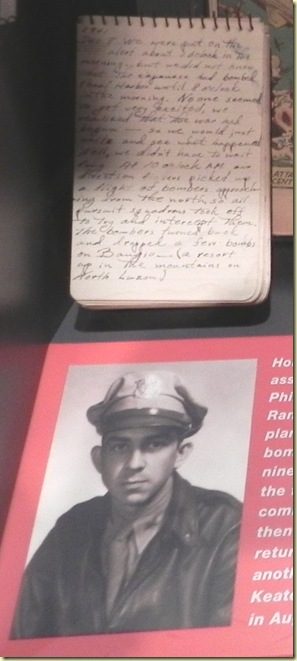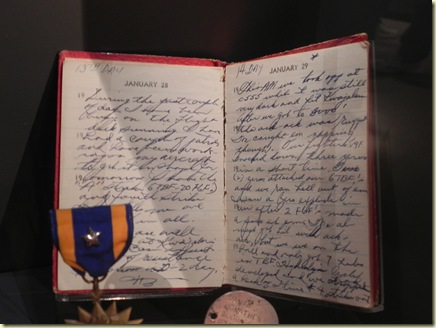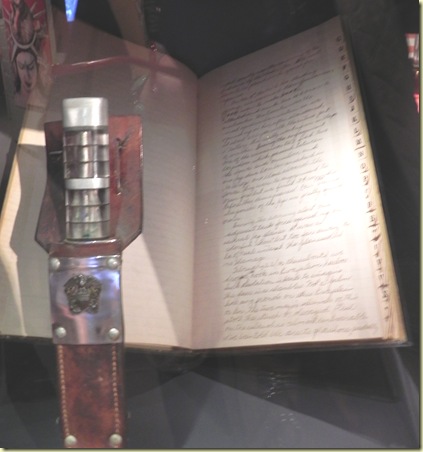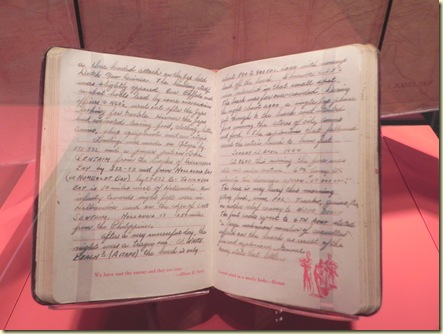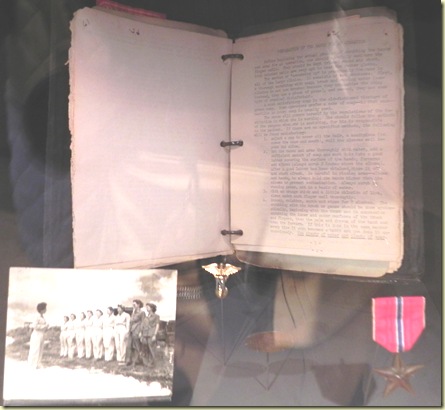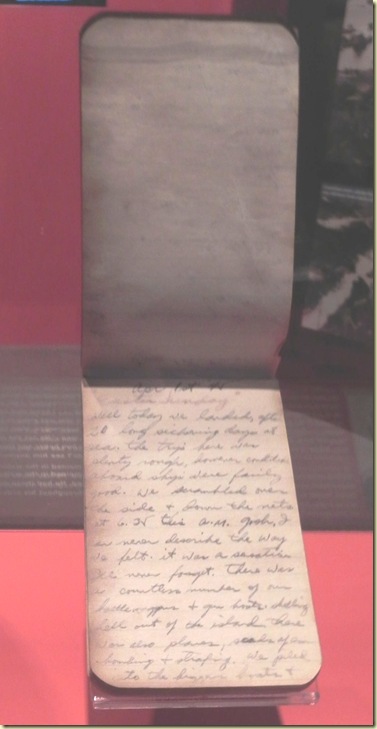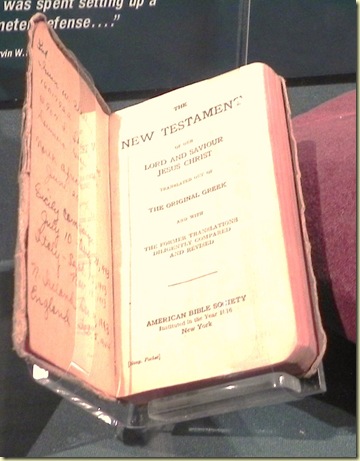Aha! Bet Brad Pitt caught your attention!
We’ve moved on from New Orleans but I was so impressed with the “Make It Right Project” in the Lower 9th Ward that I wanted to share my photos. According to the website they have completed about 50 of the planned 150 sustainable green homes. The whole area was completely devastated by the 2005 hurricane Katrina and still looks very barren but the construction activity throughout adds a lot of life. 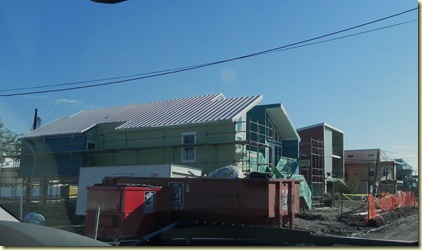
Quite an architectural feature-is that a swoop or a. . .? 
The roofline of this yellow home appears to soar! I wonder if the interior ceiling does the same?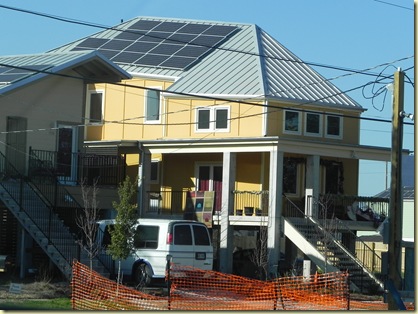
Each family picks from thirteen architectural designs and also chose their own color palettes. It makes for a colorful 16 block area!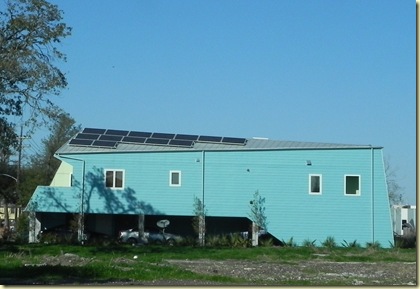
The homes are designed in a traditional New Orleans shotgun house style – narrow to fit the long skinny lots in the Lower 9th Ward. They also all include porches -- a feature highly valued in the neighborhood that places a premium on sociability and connectedness to the community.
An example of a New Orleans “double shotgun” house-two shotgun houses joined by a wall. A single shotgun house would be half this house. The difference between a shotgun and what we would call a duplex is that there are no hallways- the rooms are lined up one behind the other.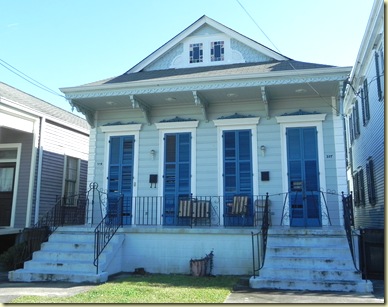
All of the homes in the Make It Right Project are elevated--raised high enough to be above the Katrina-level flooding. On previous trips through the gulf area we’ve been impressed by the many raised houses but there seems to be a movement to raise many more. Both here and in Galveston we noted many businesses devoted to elevating homes and businesses. 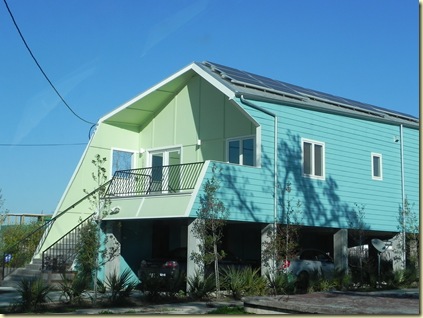
My thought about this house is that if not on “stilts” it would be a typical modern home.
Blue and yellow - very cheerful!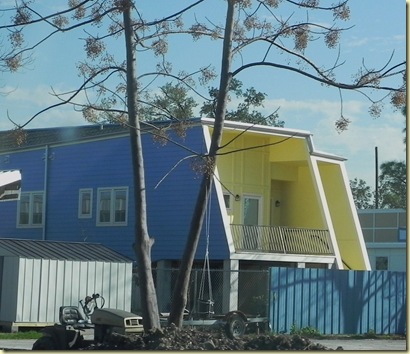
The Make It Right Project is an income-based program in which no family pays more than 30 percent of their income, including taxes and insurance, towards their housing costs. On average the contribution at closing from a family is typically about $75,000. Sometimes that's made up in the form of grants, but often by external financing sources like banks: traditional loan sources. That $75,000 cash at closing helps offset the cost of the house, and then usually the difference between the resident's contribution and the sales price, which averages about $150,000, is made up in the form of a forgivable loan. The longer the family lives in the house, the more of the loan is forgiven.
Another interesting curving feature over the door, actually the whole length of the home. All of the homes have solar panels on the roof. In an interview on Treehugger.com, Tom Darden, Executive Director of the project, stated that the energy bills for the homes average $35 per month (versus $350 in a traditional comparably-sized home in New Orleans.)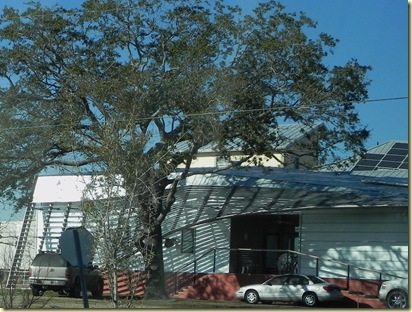
Interesting filigree ironwork and zigzag roofline on this home.
New Orleanians like their porches.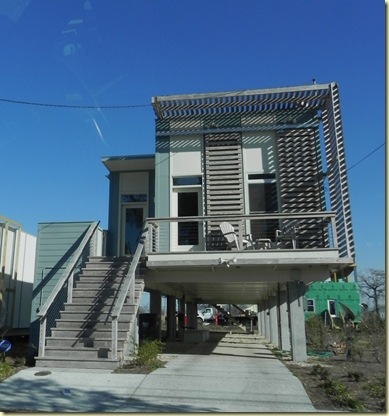
Our first impression was that these homes are WAAAY OUT architecturally and we wondered why they weren’t designed with a more “New Orleans” flavor? Somewhere I read that an attempt at conforming to traditional architecture would result in a faux and not authentic looking neighborhood. Makes sense but they are still WAY OUT!

